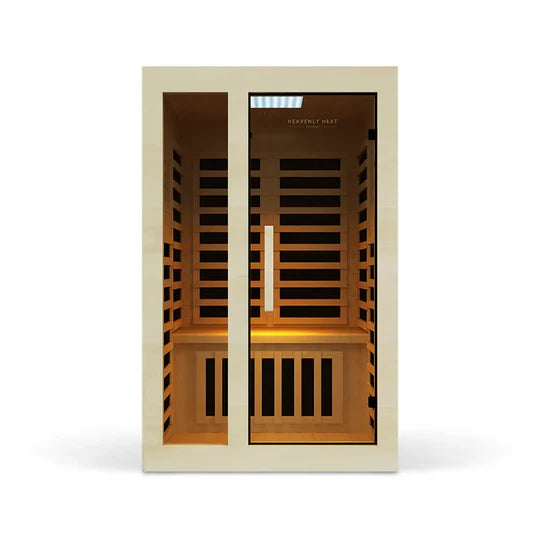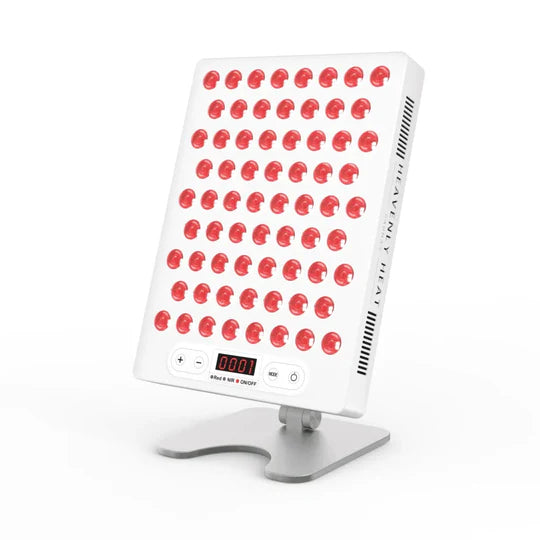Cold Plunge vs Cryotherapy: What Are The Benefits of Each?

Struggling to find the best recovery method? From athletes to wellness enthusiasts, the quest for effective recovery can be confusing.
Cold plunges and cryotherapy promise relief, but which truly delivers better results? The wrong choice could mean missing out on maximum benefits.
Discover the unique advantages of each to find your perfect recovery match.
What is a cold plunge?
A cold plunge is when you immerse your body in ice-cold water, typically around 50°F (10°C) or lower, for a few minutes.
This shock to the system helps reduce inflammation, boost circulation, and improve recovery. Celebrities like Justin Bieber and LeBron James swear by cold plunges for better performance and recovery.
However, it’s not without risks, staying in the cold water too long can lead to hypothermia, cause a shock to your body, or even strain your heart.
You can find cold plunge pools at spas, gyms, or wellness centers, or you can buy your own for personal use at home.
What is cryotherapy?
Cryotherapy is a treatment where you expose your body to extremely cold temperatures for a short period.
It typically involves standing in a chamber that cools the air to around -200 to -300°F. The cold helps reduce inflammation, improve circulation, and boost energy.
Cryotherapy has been around since the 1970s, originally used in Japan to treat arthritis. During the treatment, you may feel a tingling sensation, a bit of cold discomfort, but it usually only lasts for about 2-3 minutes.
To prepare, wear loose clothing and protective gloves, socks, and shoes. While side effects are rare, some people experience temporary numbness or skin irritation.
Cryotherapy can be a refreshing experience, but it’s important to follow safety guidelines to avoid risks.
Benefits of Cold Plunge
Boosted mental health
Cold plunges may offer a powerful boost to mental health, potentially serving as a natural antidepressant.
Dr. Eric Berg explains that cold water therapy can alleviate symptoms of depression without any side effects, providing a mood-lifting experience.
Supporting this, studies show that cold-water immersion reduces negative emotions, like stress and anxiety, and increases positive feelings such as vigor and self-esteem[1].
In one study, participants who immersed themselves in cold water experienced a significant mood improvement, feeling more alert, inspired, and less tense afterward[2].
Another study highlighted how the cold's effect on the brain strengthens resilience, mental toughness, and self-efficacy, suggesting that regular cold-water plunges may foster emotional resilience over time[3].
Interestingly, the improved mental state is linked to enhanced brain connectivity, particularly in areas related to attention and emotion regulation.
As research shows, this natural method could be an impactful way to lift your spirits and enhance your mental health.
Better sleep
Cold plunge therapy has been shown to improve sleep quality, especially after intense physical activity.
A study investigated how different cold water immersion techniques affected sleep in well-trained runners.
The researchers had participants undergo either whole-body immersion (including the head) or partial-body immersion after high-intensity exercise.
They found that whole-body cold plunge significantly improved sleep by increasing slow-wave sleep and reducing arousal and limb movements throughout the night[4].
Reduced Muscle Inflammation
Cold plunge therapy is known to help reduce muscle inflammation, making it an effective recovery tool after intense exercise.
A study reviewed the effects of cold water immersion (CWI) and found that it significantly helped reduce inflammation and soreness in muscles following resistance training[5].
By cooling down the muscles, cold plunges can help alleviate swelling and promote quicker recovery, allowing athletes to feel less sore and recover faster between workouts.
Increased metabolism
Cold plunges are known to boost your metabolism by activating brown fat, a special type of fat that helps your body generate heat.
When you immerse yourself in cold water, your body burns calories to warm up, which increases your metabolism.
A study on mice found that regular cold exposure nearly doubled their metabolism and activated brown fat.
While the mice didn’t lose weight, they showed better blood sugar control[6]. Improved blood sugar control means the body is better at managing energy use, which directly supports a healthier metabolism and helps your body function more efficiently.
Enhanced immunity
“Cold plunges might also play a role in strengthening your immune system,” says Dr. Okon Antia, founder of Campus Motion.
A study found that athletic young men who did regular cold water immersions (14°C for an hour, three times a week) saw a small yet meaningful increase in immune cells, such as monocytes and lymphocytes, over six weeks[7].
This immune boost is linked to the cold’s impact on raising metabolic rates through shivering, which releases stress hormones that may help activate immune responses, potentially enhancing the body’s natural defenses over time.
Benefits of Cryotherapy
Better sleep
Cryotherapy can help improve sleep quality, especially when used after evening workouts. A study on 22 physically active men looked into how whole body cryotherapy (WBC) impacted sleep and heart rate variability (HRV) after evening training.
Participants either received WBC (3 minutes at −40°C) or passive recovery after a 25-minute run. The results were impressive, those who underwent cryotherapy experienced significantly fewer movements during sleep, indicating a deeper rest.
Their subjective sleep quality was better, and their pain levels decreased[8]. The study also showed that cryotherapy increased parasympathetic nervous activity, helping them sleep better and recover faster.
Reduced muscle soreness
Cryotherapy has been shown to reduce muscle soreness effectively, offering significant benefits, especially after intense physical activity.
By exposing the body to extremely cold temperatures, it helps alleviate delayed onset muscle soreness (DOMS), which commonly occurs after strenuous exercise.
A study conducted through a network meta-analysis looked at various recovery methods, including cryotherapy.
The research found that cryotherapy was the most effective method for relieving muscle soreness, with a 88.3% success rate in reducing DOMS[9].
The study also compared cryotherapy to other recovery methods like cold water immersion and contrast therapy, and it concluded that cryotherapy stands out for its ability to improve muscle recovery and reduce discomfort after exercise.
Weight loss
Cryotherapy can support weight loss by helping to reduce fat, especially around the belly area.
When your body is exposed to cold temperatures, it works harder to warm itself up, which can lead to fat burning.
A study looked at how whole-body cryotherapy (WBC) affected menopausal women with metabolic syndrome (MetS) and healthy women.
After 20 sessions of WBC, both groups experienced noticeable reductions in body fat, waist size, and overall body mass[10].
The study showed that cryotherapy can help with weight loss by boosting fat-burning hormones and improving fat distribution in the body.
Improve skin health
Cryotherapy can improve skin health by using cold temperatures to reduce inflammation and promote healing.
It works by targeting the skin’s surface, reducing oxidative stress, and stimulating anti-inflammatory responses.
In a study analyzing the effects of whole-body cryotherapy (WBC) on skin, researchers found that it helped improve hydration, pH balance, and reduced transepidermal water loss.
The study also highlighted cryotherapy’s positive effects on treating conditions like actinic keratosis, ingrown toenails, and viral warts[11].
These findings suggest that cryotherapy could be a beneficial tool in skincare, improving skin health and tackling various dermatological issues.
Increase testosterone
“Exposure to extreme cold, may help stimulate testosterone production,” explains Dr. Sarah Zimmer, Doctor of Physical Therapy.
“Cold exposure can trigger the release of adrenaline and norepinephrine, which could influence the endocrine system.”
A recent study even noted testosterone increases in younger men following cryotherapy sessions, sparking further research into its potential benefits across age groups[12].
Cryotherapy benefits over Cold Plunge
Temperature control
Cryotherapy’s precise temperature control offers a clear advantage over cold plunges. With the ability to set specific temperatures, it targets areas more effectively, delivering tailored results.
This precision ensures consistent benefits, especially for those needing targeted therapy. Unlike cold plunges, cryotherapy avoids temperature fluctuations, providing a reliable and comfortable recovery solution.
Shorter session
Cryotherapy sessions are significantly shorter than cold plunges, saving time without losing effectiveness.
In just a few minutes, users can experience full recovery benefits, making it ideal for busy individuals.
These quick sessions fit seamlessly into any schedule, providing all the advantages of cold therapy with added convenience.
Safer
Cryotherapy offers a safer alternative to cold plunges, with fewer risks involved. The controlled environment minimizes potential hazards, ensuring a secure experience for users.
Without the need for full-body immersion in freezing water, cryotherapy provides the same benefits while significantly reducing safety concerns.
Reduced Water Discomfort
Cryotherapy eliminates the discomfort of cold water exposure, making it more appealing for sensitive individuals.
The absence of icy water shock allows users to enjoy the therapy without dread.
Despite the lack of water, cryotherapy delivers similar benefits, offering a comfortable and effective alternative to traditional cold plunges.
Faster Recovery
Cryotherapy accelerates recovery by delivering concentrated cold therapy directly to the body.
It reduces inflammation and muscle soreness quickly, making it superior for post-workout recovery.
Unlike cold plunges, cryotherapy’s targeted approach ensures faster relief, allowing athletes and active individuals to get back to their routines efficiently.
Cold Plunge benefits over Cryotherapy
Lower Cost
Cold plunges offer a budget-friendly way to enjoy cold therapy. Unlike cryotherapy, which can be expensive due to specialized equipment and sessions, a cold plunge can be as simple as filling a tub with ice water.
Easy to access
Cold plunges are incredibly easy to access. You don’t need to visit a cryotherapy clinic or book appointments.
With a bathtub, a pool, or even a natural cold water source, you can enjoy the benefits anytime. This convenience makes it a go-to choice for many.
Natural Experience
Cold plunges provide a more natural experience compared to cryotherapy. Instead of stepping into a high-tech chamber, you immerse yourself in real water, connecting with nature.
This approach feels grounding and refreshing, adding a calming element that cryotherapy often lacks.
More Fun and Social
Cold plunges are more than just therapy, they can be a fun, social activity. Friends and family can join in, making it an enjoyable way to bond.
Whether at a lake, pool, or backyard setup, the shared experience creates lasting memories while promoting health.
Conclusion
Cold plunges and cryotherapy each offer unique benefits for recovery. Cold plunges are effective for reducing muscle inflammation, boosting metabolism, and improving mental health.
Cryotherapy, on the other hand, excels in reducing muscle soreness, supporting weight loss, and enhancing skin health.
Both methods provide valuable advantages depending on your recovery needs.
Whether you prioritize faster recovery or deeper muscle relief, choosing the right method can help optimize your performance and well-being.
Consider your goals to determine which therapy works best for you.







































